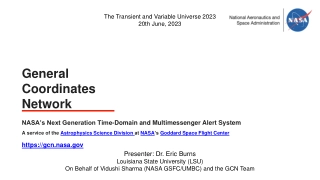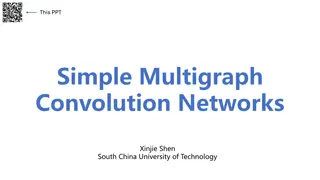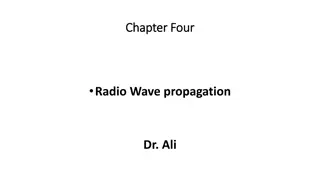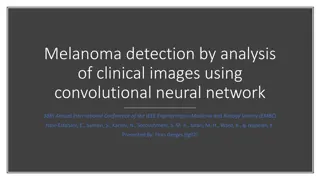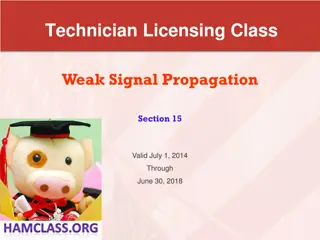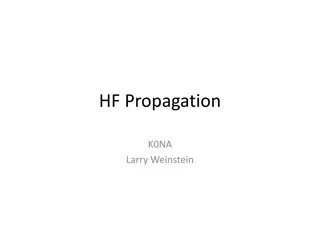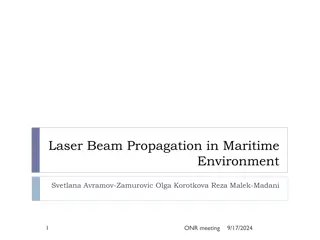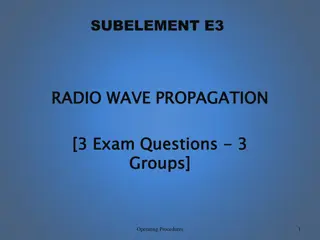Rumor Source Detection with GCN: Unveiling the Propagation Mystery
In the realm of rumor detection, a groundbreaking approach using Graph Convolutional Networks (GCN) has emerged for source identification. This innovative method, known as LPSI, seeks to predict rumor sources based on network labels, challenging conventional content-based strategies. The iterative process behind LPSI involves label propagation within a partially infected network, ultimately converging to unravel the origins of rumors. Through experiments on diverse datasets like Karate and Jazz networks, the efficacy of GCN structures and data pre-processing techniques have been explored, shedding light on the future potential of GCN in uncovering intricate web of misinformation.
Download Presentation

Please find below an Image/Link to download the presentation.
The content on the website is provided AS IS for your information and personal use only. It may not be sold, licensed, or shared on other websites without obtaining consent from the author.If you encounter any issues during the download, it is possible that the publisher has removed the file from their server.
You are allowed to download the files provided on this website for personal or commercial use, subject to the condition that they are used lawfully. All files are the property of their respective owners.
The content on the website is provided AS IS for your information and personal use only. It may not be sold, licensed, or shared on other websites without obtaining consent from the author.
E N D
Presentation Transcript
Rumor Source Detection with GCN 517030910360 517030910307
01 02 Background Proposed Method 03 Experiments 04 Future Work
01 Background
Background In general, most of the studies related to rumor defeating are divided into two categories. One is the content- based rumor identification, which mainly focuses on building multiple features of rumor content, such as rumor text, spreading model or user behavior etc. In this way, an automatic classifier is usually trained to distinguish whether a given text is a rumor or not. However, it is difficult to locate the propagation source of rumor, which is a significant task in rumor detection on social network.
02 Proposed Method
Proposed Method LPSI LPSI is the first attempt on this problem, which propagates integer labels in network and predicts the rumor sources based on the convergent node labels.
LPSI The iteration equation of the label propagation will converge to : And the process of LPSI could be briefly summarized as following two steps. 1. Assign labels to the partially infected network 2. Label propagation on the network
Graph Convolutional Networks (GCN) Originally designed for semi- supervised learning And cannot be directly applied for the supervised learning based source detection problem. Inspired by traditional neural network and extends traditional deep learning
GCN Network Structure Data Pre-processing
03 Experiments
Datasets Karate A social network of friendships between 34 members of a karate club. A classic dataset. 1 Dolphin An undirected social network of frequent associations between 62 dolphins in New Zealand. Power grid An undirected unweighted network representing the topology of the Western States Power Grid. 2 4 Ego-Facebook Contains social circles from Facebook. Jazz A network of Jazz bands performing from 1912 to 1940. 5 3
DOLPHIN JAZZ KARATE 0.25 0.1 0.32 0.35 0.22 0.08 0.27 0.3 0.18 0.08 0.2 0.16 0.23 0.06 0.25 0.06 0.05 0.15 0.17 0.2 0.11 0.15 0.1 0.04 0.03 0.03 0.15 0.1 0.09 0.06 0.1 0.02 0.01 0.05 0.05 0 0 0 K = 2 K = 3 K = 5 K = 2 K = 3 GCN K = 5 K = 2 K = 3 GCN K = 5 LPSI GCN LPSI LPSI We randomly sample thousands of partial infection state on each dataset as training data, and use f1 score as evaluation metric of performances of LPSI and GCN. As we could see from pictures above, smaller graph and larger number of rumor sources lead to better result.
04 Future Work
Demo Flask D3 HTML
Future Work apply GCN into content- based rumor identification Try larger networks Enrich our website Explore better hyperparameter s


